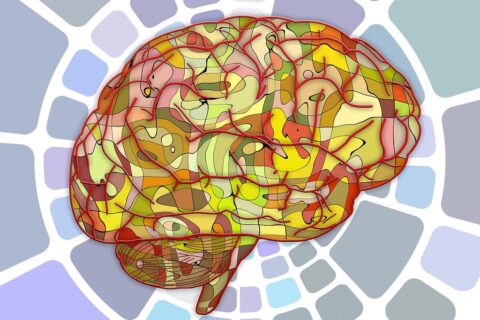Essential Tremor: How Speech Therapy Can Treat It

Essential tremor (ET) is a neurological condition affecting more than 10 million Americans. It ranks as the most common tremor condition. This blog will go into more detail about what causes essential tremor, the symptoms associated with it, and how LSVT LOUD can treat it. We will also share a personal success story of how one of our clients was able to vastly improve her quality of life.
What is Essential Tremor?
ET is characterized by a continuous, measured trembling throughout one or more parts of a person’s body. It can involve the head, voice, hands, trunk, and legs, and it is NOT caused by another disorder. A distinguishing feature of ET is its presence during activities, such as pouring water into a cup, eating, or writing. It is also usually absent when a person is at rest (although cases of resting tremor and ET have been reported).
While this condition does not affect life expectancy, it can have a profound and adverse impact on a person’s quality of life, ability to carry out and participate in daily activities, and overall confidence, self-concept, and self-esteem. Regrettably, many people living with ET face isolation because of these challenges and experience higher rates of anxiety and depression.
What Causes Essential Tremors?
There remains a lot to learn about Essential tremors. Scientists and neurologists are continuing to develop and evolve their understanding of this condition, its causes, diagnostic criteria, and treatment options.
The onset of ET is typically slow and subtle and affects populations across the lifespan, with cases reported even in infancy. Results of positron emission tomographic (PET) studies in patients with ET show increased activation of an area of the brain called the cerebellum. This area plays a significant role in the timing and coordination of movement.
Studies have reported increased activation in the cerebellum even when individuals are at rest, which could be related to the underlying causes of ET. Furthermore, while there appears to be a genetic link to ET with approximately 50% of those with this diagnosis having relatives who share the condition, there is no evidence to date tying ET to any specific chromosomal region.
Experts use accelerometry and electromyography (EMG) to measure the size and speed of tremors within specific muscles. This enables specialists to calculate tremor intensity and tremor frequency. These measurements can help differentiate and quantify tremors and aid in the differential diagnosis between ET and other conditions with tremors, such as Parkinson’s disease.
Symptoms of Essential Tremor
When an essential tremor affects the muscles of the larynx, chest, abdomen, or mouth, it can cause the voice to sound shaky, breathy, or hoarse. ET can make it difficult to feel like you can control various aspects of the voice. Some people experience pitch breaks. Some have trouble making their voice loud enough to be heard and cannot easily modulate intonation/pitch, rhythm, or quality.
This happens because when we produce speech, we must first engage the diaphragm and other muscles in the respiratory system to inhale air. Upon exhalation, multiple muscles of the abdomen and chest work in an intricate and coordinated manner with the larynx and the vocal folds/cords.
Exhaled air travels through the space in between the vocal folds called the glottis. Our vocal folds are then set into a rhythmic open/close motion called a mucosal wave. Changes in air pressure create sound vibrations that produce our voice. These sound vibrations are then shaped into specific sounds in our oral, pharyngeal, and nasal cavities by using our tongue, teeth, lips, jaw, velum, palate, and cheeks, which we finally perceive as words.
If involuntary muscular spasms and contractions occur in any part of the motor speech system at any time, they can disrupt the overall balance and coordination of the system and negatively impact our ability to speak. Many people with ET feel their voice is unreliable and difficult to control, adding they struggle to feel like themselves when communicating.
LSVT LOUD®: An Essential Tremor Treatment That Works!
LSVT LOUD is the gold standard speech intervention method for individuals with speech and voice disorders due to Parkinson’s disease. It has also demonstrated notable benefits for persons with other neurological conditions. With over 25 years of rigorous scientific research, LSVT LOUD has helped people living with neurologically based voice and speech disorders experience lasting outcomes.
The program helps people achieve healthy, adequate vocal loudness with good vocal quality. A series of structured exercises is used to improve vocal and speech abilities. During the program, individuals develop an understanding of and ability to use the right amount of effort required to speak at a healthy volume with a stable voice and clear speech.
As a result of increased and appropriate phonatory effort, a positive spreading of effects is experienced across the speech system. This includes improved speech intelligibility, pitch range, and control when talking.
Graduates of the program experience greater vocal control, ease, comfort, and success when speaking. Training in specific exercises also optimizes the strength, coordination, and volitional command of the speech system.
While LSVT LOUD studies to date have primarily focused on the impact of LSVT LOUD in neurologically based conditions, such as Parkinson’s disease (PD), atypical Parkinsonisms, Down’s syndrome, cerebral palsy, multiple sclerosis, autism, and stroke, many neurological voice features of these populations overlap with those of ET.
No studies of LSVT and ET have yet been completed. However, individual success stories exist and provide pressing urgency for further research in this population.
How I Cured My Essential Tremor
Every Open Lines® clinician is specially trained and certified in LSVT LOUD treatment. Each clinician is also supervised by LSVT LOUD’s clinical expert and faculty instructor, Dr. Jessica Galgano. The Open Lines® team has had excellent results using this treatment program to improve voice and speech outcomes with individuals diagnosed with ET facing vocal tremors.
Here is a personal story from one of our clients:
I have an essential tremor that affects primarily my voice, and over the years it has become quite severe. Up until recently, I have avoided speaking on the telephone whenever possible. When meeting new people, I would become quite anxious as I would anticipate being judged by my voice. The tremor could be so severe that my words would slur, and the anxiety so intense that it would be difficult to find the right words to express myself. I was becoming depressed and withdrawn.
I was also feeling a bit hopeless about improving the situation. I had been to an ENT doctor, one of the highest-rated in the city. His two recommendations were Botox or beta blockers, both of which can have serious side effects and are not particularly helpful for voice tremors. Alternatively, I have tried acupuncture, massage, reiki, cranial-sacral therapy, and various supplements to calm the ANS. While I believe all this helped with the anxiety, I am not sure it had any effect on my voice.
Then, early last year, I discovered Open Lines® Speech and Communications Services and a special technique that they offer called LSVT Loud. This method has demonstrated success with similar neurological conditions such as Parkinson’s Disease.
Miraculously, it seemed to me, that after just one session my voice improved significantly. Within a couple of weeks, I was able to do things with my voice that were simply impossible before, such as intentionally varying the pitch. So, not only was the treatment helping me to control the tremors; but it was also improving the quality of my voice.
Needless to say, I am thrilled to have found this technique, and not just because my voice has improved. Much more importantly, I have my confidence back. I feel comfortable when talking on the phone, and the anxiety that I felt when meeting new people is gone.
I do feel that it is unfortunate that when I visited an ENT, one with decades of experience treating voice disorders, a treatment as effective as LSVT Loud was not recommended. Whereas, the alternatives that were recommended are often ineffective and could have severe side effects. In any case, I am grateful that I did find this treatment and the amazing therapists at Open Lines® Communication.
LSVT LOUD Treatment at Open Lines®
If you’re struggling with communication difficulties, it’s time to turn to Open Lines®. Contact us via phone (212-430-6800), email [email protected], or by filling out our convenient contact form. Improve your communication skills and unlock your potential with Open Lines® Speech and Communication in New York today!
Get in Touch With Open Lines®














